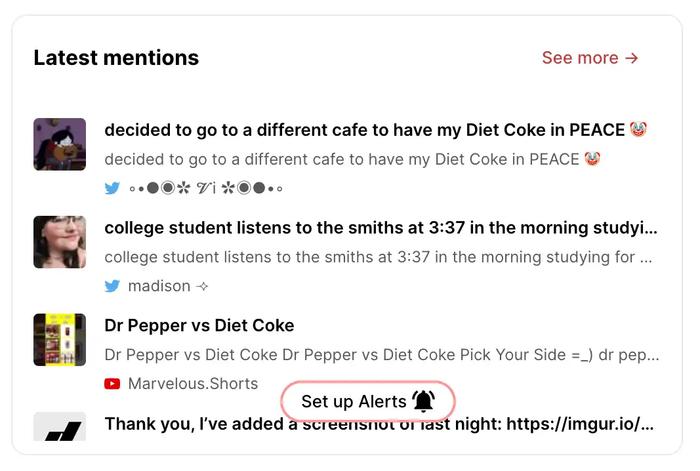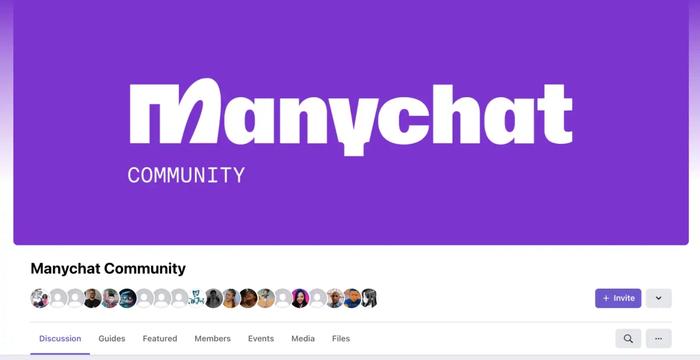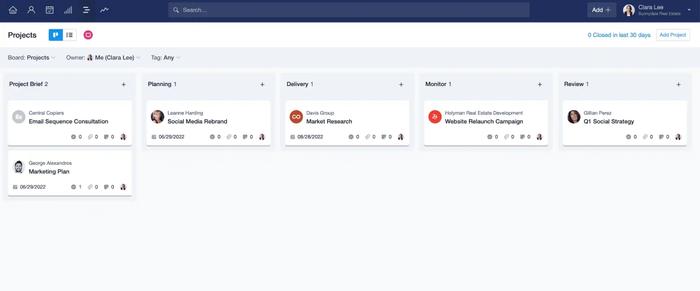Looking for the new black in sales is like chasing a moving target — everyone thinks they're close, but the goalposts keep moving.
Customer obsession is more than a trend. Now, it's a business philosophy that can redefine your brand's relationship with its customers, resulting in unprecedented customer loyalty. In this blog post, we'll show you how (and why) to tackle it in your business.
What is customer obsession?
Customer obsession is the relentless focus on understanding, serving, and delighting customers.
It goes beyond mere customer service to encompass every interaction and touchpoint, aiming to exceed expectations and create memorable experiences.
Why customer obsession matters
Merely meeting customer expectations isn't enough. In short, customer obsession is the differentiator that can set your brand apart, leading to long-term relationships and sustainable business growth.
So, why is customer obsession important?
#1 Builds brand loyalty
When you focus on customer obsession, you create an emotional bond with your customers. This connection makes them more likely to be loyal to your brand, and helps reduce customer churn and increases profitability over time.
#2 Increases customer lifetime value
Being obsessed with your customers means you're constantly finding ways to add value to their lives. Either in the actual offering or customer service. Thistactic increases your clients' immediate spend but also their lifetime value, as they continue to engage with your brand over time.
#3 Enhances reputation
A customer-obsessed approach turns your customers into brand advocates. This enhances your reputation and attracts new customers. Often, it's more effective than expensive marketing campaigns.
#4 Drives innovation
Listening and understanding your customers' needs and feedback drives your product development.. With a customer centric strategy, you can be sure that you're keeping up with market demands – but also exceeding customer expectations, and staying ahead of your competitors.
Win-win.
How to measure customer obsession
Understanding the impact of customer obsession on your business is important, but it may not be immediately obvious how to measure it. Here are some key metrics that offer valuable insights – along with how to calculate them.
1. Customer satisfaction
Customer satisfaction is a fundamental metric that can be measured through post-interaction surveys or direct feedback.
A high satisfaction score indicates that you're meeting or exceeding customer expectations. A low one… gives you food for thought.
To calculate it, you can use a Customer Satisfaction Score (CSAT) survey, where you ask customers to rate their satisfaction on a scale of one to five and then average the responses.
2. Net Promoter Score (NPS)
NPS measures customer loyalty by asking how likely customers are to recommend your product or service.
A high NPS score indicates strong customer loyalty and serves as a good indicator of business growth.
To calculate NPS, subtract the percentage of detractors (those who score zero-six) from the percentage of promoters (those who score nine-ten) in response to the recommendation question.

3. Customer retention rate
A high customer retention rate is a strong indicator of effective customer obsession strategies. It shows that not only are you acquiring customers, but you're also keeping them. Monitor this metric closely to make sure that your customer obsession is actually translating into long-term, profitable relationships.
To calculate this rate, take the number of customers at the end of a time period minus the number of new customers acquired, divided by the number of customers at the start of the time period, then multiply by 100.
4. Customer effort score (CES)
CES measures the ease with which customers can get their issues resolved or achieve their goals using your product.
A low effort score means higher customer satisfaction and is evidence of a effective customer obsession strategy.
To calculate CES, you can use a post-interaction survey that asks customers to rate the ease of their experience on a scale from 'very difficult' to 'very easy' and then work out average of those scores.
How to build a customer obsession strategy: step-by-step
Now, we'll walk you through eight simple steps to cultivate true customer obsession in your organization.
Each step serves as a milestone in your journey towards becoming acustomer-obsessed company that not only survives but thrives. You'll also find customer obsession examples you can follow in your own business.
Step 1: Understand your customer needs
To build a customer-obsessed culture, you must deeply understand your customer needs. Use tools like customer personas and customer journey mapping to get a comprehensive understanding of what your customers desire/needs/wants are.
Then, tailor your product or service offerings to meet those needs effectively. The goal is to work backwards from the customer's needs to your business solutions.
Example:
Amazon's success is rooted in its ability to understand AND anticipate customer needs, often before the customer does.
Step 2: Collect and analyze customer data
Data is the basis of any customer obsession strategy. Use analytics tools to collect customer data that can provide insights into customer behavior, preferences, and pain points.
A data-driven approach guarantees that your strategies are aligned with what your customers actually want. The focus should be on both qualitative and quantitative data for a rounded understanding.
Example:
Netflix uses data analytics to recommend shows and even create new content.
Step 3: Implement proactive customer service
Proactive customer service means anticipating problems before they happen and presenting solutions.
This could be as simple as sending a FAQ email after a customer makes a purchase or as complex as using AI to antcipate customer issues.
Being proactive rather than reactive can boost customer trust and satisfaction.
Example:
Apple's customer service teams often reach out to customers to assist with setup and offer tips after a new product purchase.
Step 4: Empower your customer service department
Your customer service department is the frontline of customer obsession. They can make or break the experience.
Equip them with the right strategies and self-service tools to provide exceptional customer service. This will not only solve immediate technical issues but also contribute to customer retention. Empower them to make decisions that benefit the customer, even if it's outside the usual protocol.
Example:
Zappos empowers its customer service representatives to go above and beyond, even sending flowers to customers.

Step 5: Prioritize customer feedback
Customer feedback is invaluable in maintaining a customer-obsessed culture. Any method can be used to gather this feedback – but social listening might be the best of all.
Using social media management tools, you can navigate through numerous mentions of your brand and react to them:

Actively listening to your customers helps adaptyour business model and tailor your offerings. This feedback loop is crucial for continuous improvement and innovation. You can run your company without it, but you would miss out vital information. Example:
Starbucks used its My Starbucks Idea platform to gather customer suggestions and actually implemented many of them. Approximately 150 thousand ideas were collected from clients directly.
Step 6: Focus on customer experience and engagement
Customer experience goes beyond just customer service. Prioritize customer engagement strategies that enhance the overall customer experience. This includes everything from the user interface of your website to the after-sales service you provide.
Example:
Sephora's mobile app enhances customer experience by offering augmented reality-based makeup trials.
Step 7: Align company culture and operations
Customer obsession always starts at the top. Leaders pay attention to aligning the whole company culture and customer operations towards a customer-first approach. Regular training sessions for new employees and existing staff can instill this alignment. Every department and function is then infused with customer obsession.
Example:
Southwest Airlines prioritizes customer service with its Transfarency policy, which aims to be straightforward about costs and fees.

Step 8: Build a community around your brand
How to make people trust you?
Befriend them.
And how to do it?
Stay close to them, wherever they are.
Building a community around your brand is one way to engage both new and existing customers.
A community serves as a platform for customers to share their experiences, tips, and even provide peer-to-peer support. It creates a sense of belonging and loyalty, which is invaluable for customer retention.
Example:
Manychat has successfully built a community where their users can share insights, ask questions, and provide support to each other.

What are qualities of customer-obsessed companies?
Organizations that prioritize customer obsession often outperform their competitors in various metrics, from customer acquisition to retention.
Let's identify the key qualities that set customer-obsessed companies apart.
Deep understanding of customer needs
Customer-obsessed companies invest heavily in market research, customer surveys, and data analytics. This enables them to understand not just what their customers want, but also why they want it, allowing for more targeted and effective solutions. And, for turning these customers into loyal customers, for years to come.
Personalized experiences
Customer-centric organizationsgo the extra mile to offer personalized products, services, or experiences. Using data and customer feedback, they tailor their offerings to meet individual needs, thereby increasing customer satisfaction and loyalty.
Proactive problem-solving
Rather than waiting for issues to arise, customer-obsessed companies anticipate potential challenges and address them proactively.
This often surprises customers and exceeds their expectations, leading to higher levels of satisfaction.
High-quality customer service
Exceptional customer service is a defining feature of these companies. Whether it's through 24/7 support, multi-channel accessibility, or highly trained staff, the focus is always on resolving customer issues as efficiently and effectively as possible.
Transparency and honesty
Building trust is crucial for customer-obsessed companies, and they do this by being transparent and honest in their practices, pricing, and policies.
Even when mistakes are made, they own up to them and make amends, further solidifying customer trust.
Employee empowerment
Employees in customer-obsessed companies are empowered to go above and beyond to meet customer needs.
Such tactics creates a culture where the customer is always the priority, and employees feel both responsible for and capable of delivering exceptional service.
Continuous improvement
Complacency is not an option for customer-obsessed companies.
They continuously seek feedback from customers and stakeholders and use it to improve. This cycle of feedback and improvement keeps them at the very top of customer satisfaction.
Long-term relationship building
Instead of focusing solely on immediate transactions, these companies invest in building long-term relationships with their customers. Through customer retention programs, loyalty rewards, and community-building efforts, they keep customers engaged and coming back for more.
Each of these qualities contributes to a holistic approach to customer obsession, setting these companies apart in highly competitive markets.
Turn your business into a customer obsessed company with Capsule
If you're on the hunt for a tool that can elevate your customer-centric approach, look no further than Capsule CRM. This platform is far from your average CRM.

It's a game-changer for businesses that put customers at the heart of their operations. With its Contact Management feature, Capsule allows you to keep all your customer interactions and history in one central hub.
This makes it easier to understand your customers on a deeper level and deliver personalized experiences at all times.
Seal the deal: Sales pipeline management
When it comes to sales, Capsule CRM's Sales Pipeline feature is your secret weapon. It's designed to complement your unique sales process, helping you identify which deals need your immediate attention. Making informed decisions that contribute to your overall business strategy has never been easier. The focus here is on analytics, providing you with a comprehensive view of your sales activities and their impact on your bottom line.
Automate to elevate: Workflow simplified
Time is money, and we understand that. That's why Capsule offers Workflow Automation to eliminate the mundane tasks that slow you down.
From automating sales workflows to streamlining various business processes, Capsule makes your life easier. This is especially useful for e.g., ecommerce businesses that handle a high volume of transactions and need to maintain consistent, high-quality service for satisfied customers.
Scalability and adaptability: Grow with Capsule
What sets Capsule CRM apart is its flexibility. Whether you're a startup or a growing enterprise, Capsule's Growth Plan offers features that scale with your business.
Advanced sales reporting? Customizable access permissions for customer records? Capsule is designed to adapt to your evolving needs. Treat it as a long-term partner in your journey towards customer obsession.
Conclusion
All companies want to have loyal customers in their business. Most companies, though, don't realize the real value of customer centricity.
Truly customer-focused organizations go beyond mere buzzwords to forge a mutually beneficial relationship with their clientele. Embracing customer obsession isn't just good for consumers. it's a strategic imperative that sets industry leaders apart. With Capsule CRM, this process is streamlined and simplified. Try it for 14 days for free to see how it works.




